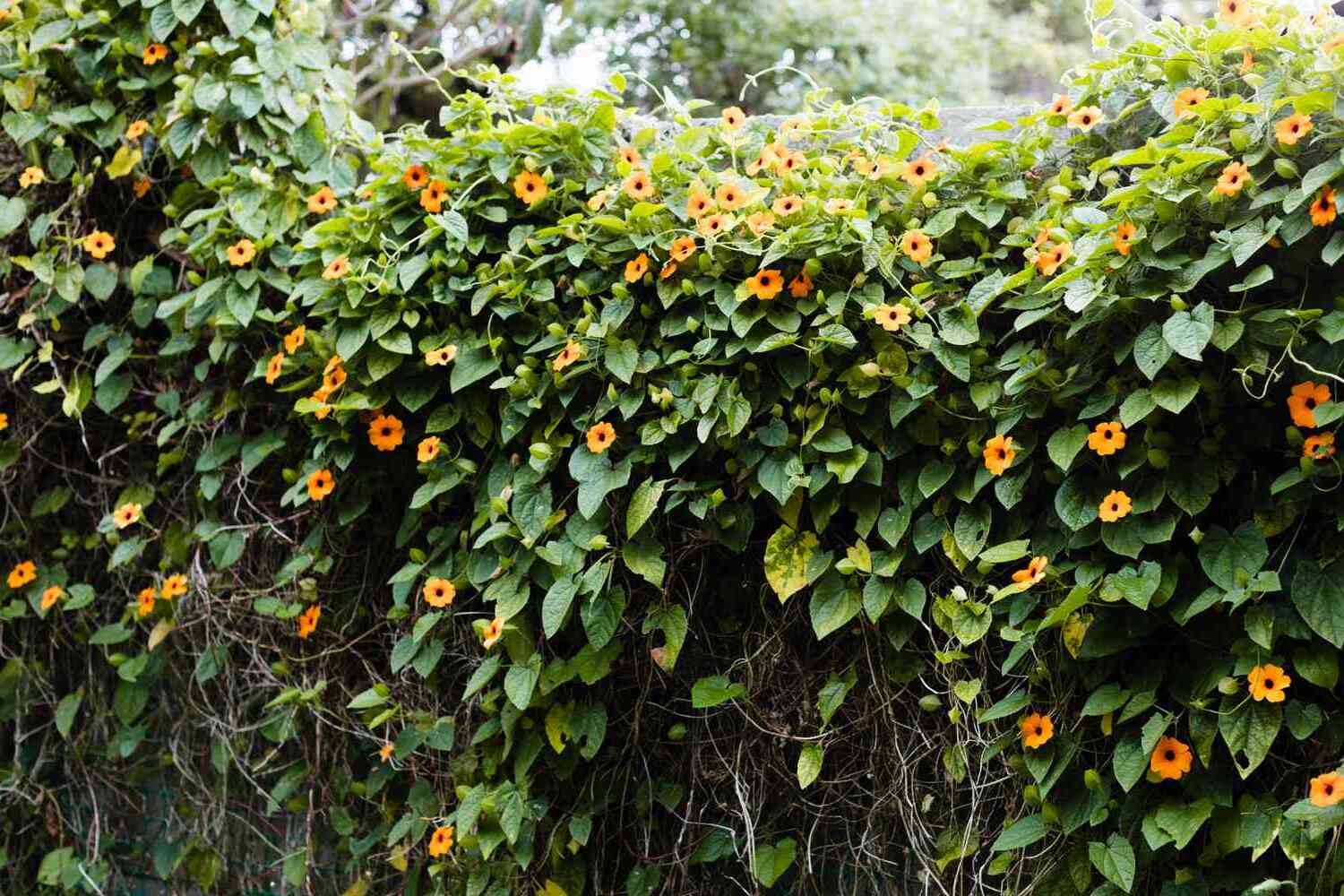
What makes the Black-eyed Susan vine so special? This vibrant climber, known scientifically as Thunbergia alata, is famous for its striking orange, yellow, or white flowers with a dark center, resembling an eye. Native to Eastern Africa, it thrives in warm climates and can grow up to 8 feet tall. Perfect for gardens, trellises, and hanging baskets, this vine adds a splash of color and charm to any outdoor space. Easy to grow and maintain, it attracts pollinators like bees and butterflies, making it a favorite among gardeners. Whether you're a seasoned gardener or a beginner, the Black-eyed Susan vine is a delightful addition to your plant collection.
What is a Black-eyed Susan Vine?
The Black-eyed Susan vine, also known as Thunbergia alata, is a popular climbing plant admired for its vibrant flowers and lush foliage. Native to Eastern Africa, this vine has made its way into gardens worldwide, adding a splash of color and charm.
- Bright Blooms: The flowers of the Black-eyed Susan vine are typically bright yellow or orange with a dark center, resembling an eye.
- Fast Grower: This vine can grow rapidly, reaching up to 8 feet in a single growing season.
- Annual or Perennial: Depending on the climate, it can be grown as an annual in cooler regions or a perennial in warmer areas.
- Heart-shaped Leaves: The leaves are heart-shaped, adding to the plant's decorative appeal.
- Pollinator Friendly: Bees and butterflies are attracted to its bright flowers, making it a great addition to pollinator gardens.
Growing Conditions for Black-eyed Susan Vine
Understanding the ideal growing conditions for the Black-eyed Susan vine can help ensure a healthy and vibrant plant. Here are some key factors to consider.
- Sunlight Needs: This vine thrives in full sun but can tolerate partial shade.
- Soil Preferences: Well-drained soil is essential for optimal growth.
- Watering Requirements: Regular watering is necessary, especially during dry spells, but avoid waterlogging.
- Temperature Tolerance: It prefers warm temperatures and can suffer in frost.
- Humidity Levels: High humidity can benefit the plant, mimicking its native tropical environment.
Planting and Care Tips
Proper planting and care can make a significant difference in the health and appearance of your Black-eyed Susan vine. Here are some tips to get you started.
- Starting from Seeds: Seeds can be sown indoors 6-8 weeks before the last frost date.
- Transplanting: Young plants should be transplanted outdoors after the danger of frost has passed.
- Support Structures: Provide a trellis or other support for the vine to climb.
- Pruning: Regular pruning can help control its growth and encourage more blooms.
- Fertilizing: A balanced fertilizer can promote healthy growth and flowering.
Common Problems and Solutions
Like any plant, the Black-eyed Susan vine can face various issues. Knowing how to address these problems can keep your plant thriving.
- Pests: Aphids and spider mites can be problematic but can be controlled with insecticidal soap.
- Diseases: Powdery mildew can affect the leaves, especially in humid conditions. Proper spacing and air circulation can help prevent this.
- Yellowing Leaves: This can be a sign of overwatering or poor drainage.
- Wilting: Wilting may indicate underwatering or root rot.
- Poor Flowering: Insufficient sunlight or nutrients can lead to fewer blooms.
Interesting Facts About Black-eyed Susan Vine
Beyond its beauty and gardening requirements, the Black-eyed Susan vine has some fascinating aspects worth knowing.
- Symbolism: In some cultures, the Black-eyed Susan vine symbolizes justice.
- Medicinal Uses: Traditional medicine has used parts of the plant for various remedies.
- Companion Planting: It can be planted alongside other climbing plants like morning glories for a stunning display.
- Varieties: There are several varieties, including ones with white, red, or pink flowers.
- Edibility: While not typically consumed, the plant is non-toxic to humans and pets.
Fun and Creative Uses
The Black-eyed Susan vine isn't just for gardens. It can be used creatively in various ways to enhance your living space.
- Hanging Baskets: Its trailing habit makes it perfect for hanging baskets.
- Window Boxes: Adds a pop of color to window boxes.
- Arbors and Pergolas: Ideal for covering arbors and pergolas, creating a beautiful shaded area.
- Indoor Decor: Can be grown indoors in bright, sunny spots for a touch of greenery.
The Final Word on Black-eyed Susan Vines
Black-eyed Susan vines are more than just pretty flowers. They bring a splash of color to any garden, are easy to grow, and attract pollinators like bees and butterflies. These vines can climb trellises, fences, or even hang from baskets, making them versatile for any space. They thrive in warm climates but can be grown as annuals in cooler areas. With minimal care, they bloom profusely, adding beauty and charm to your outdoor space. Whether you're a seasoned gardener or a newbie, these vines are a fantastic choice. So, if you're looking to add some vibrant, eye-catching plants to your garden, black-eyed Susan vines are a great pick. Happy gardening!
Was this page helpful?
Our commitment to delivering trustworthy and engaging content is at the heart of what we do. Each fact on our site is contributed by real users like you, bringing a wealth of diverse insights and information. To ensure the highest standards of accuracy and reliability, our dedicated editors meticulously review each submission. This process guarantees that the facts we share are not only fascinating but also credible. Trust in our commitment to quality and authenticity as you explore and learn with us.
